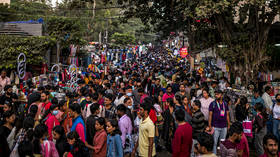China to lose its most populous country title this year – UN

India will become the world’s most populous country by April 14, reaching 1.43 billion and overtaking China earlier than previously expected, according to UN data. The country’s population, currently over 1.4 billion, is expected to continue to grow to 1.7 billion in 2064 before it starts to decline.
The UN has repeatedly moved up its estimate of when India will overtake its northern neighbor in population size. As recently as 2019, it was not expected to happen until 2027. It will be the first time in 300 years China is not the global population leader.
While India has been growing at a rate of 2% since the second half of the 20th century, China’s growth rate shrunk by nearly half to 1.1% between 1973 and 1983 and never recovered, in large part because of government policies limiting families to one child. While Chinese families are now free to have as many children as they like, the average family size remains at 1.3.
Thus India surpassing China as the most populous country is not because the former’s birth rate is surging – it has actually declined from an average of 5.7 births per woman in 1950 to just two births per woman in 2022 – but because it is declining more slowly than China’s.
India’s economy is also growing. Recently surpassing its former colonial centre, Britain, as the fifth largest in the world. It is expected to reach number three by 2029, according to the State Bank of India. The country is also predicted to provide over a sixth of the projected increase in the world’s working-age population between now and 2050.













